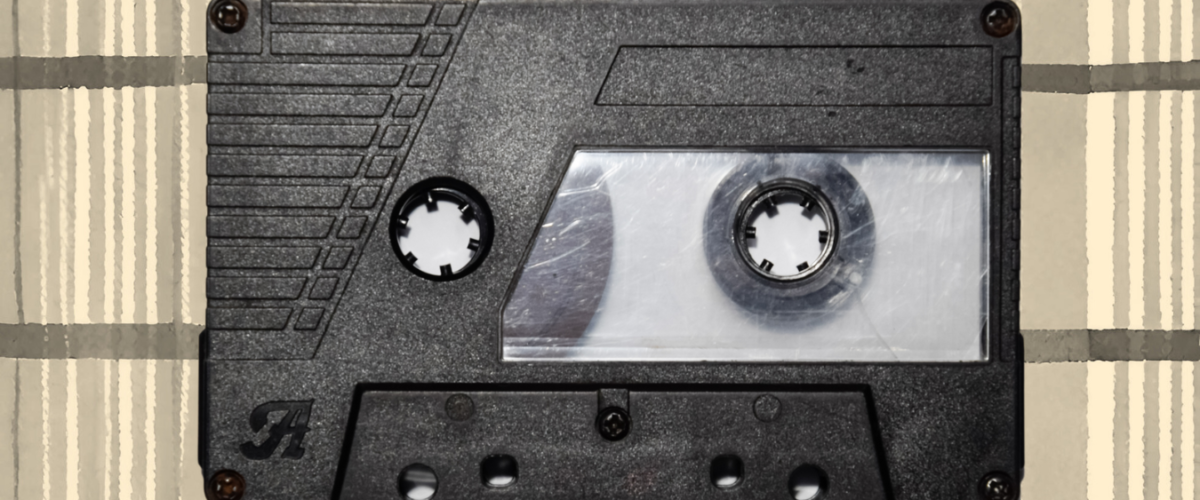This series analyses the changes proposed by the Criminal Law Bills in 2023. This article was first published as part of Project 39A’s Bharatiya Nagarik Suraksha Sanhita Bill, 2023 and Bharatiya Sakshya Bill, 2023: A Substantive Analysis, a complete version of which can be accessed here.
This post analyses the implications of the changes proposed to the provisions pertaining to the admissibility of electronic evidence under the Bharatiya Nagarik Suraksha Sanhita Bill, 2023.
Similar to s.65B IEA, Cl.63 BSB provides a specific procedure for the admissibility of electronic records. However, it introduces the following changes to the other provisions relating to primary and secondary evidence, that would impact the evidentiary nature and admissibility of electronic records:
- Cl.2(c) BSB which replaces s.3 IEA, defines documents to also include ‘electronic or digital records’. Accordingly, separate references to electronic records have been deleted in certain provisions.[1]
- Cl.57 BSB, which replaces s.62 IEA, introduces explanations 4 to 7, which expand the meaning of primary evidence to include electronic or digital records. These explanations introduce the following changes:
- Any electronic file which is created, or stored simultaneously or sequentially in multiple files (which would include copies) would be primary evidence.
- If the proper chain of custody of electronic or digital records is produced, then it would be primary evidence.
- Any video recording which is transmitted, broadcasted or stored in another device would be primary evidence.
- If an electronic record is stored in multiple storage spaces in a computer, then each automated storage, including the temporary files, would be primary evidence.
- Cl.62 BSB, which replaces s.65A IEA, states that electronic records must be proved as primary evidence, unless mentioned.
- Newly introduced Cl.61 BSB, prescribes that the admissibility of electronic records cannot be denied on the basis of their nature as electronic records and their legal effect, validity and enforceability shall be at par with paper records.
Notably, Cl.63(4) BSB introduces the stage at which the certificate regarding the electronic record must be submitted. Further, it proposes changes to the authorship of such certificates, which may include the person in charge of the computer or communication device and an expert that retrieves the electronic record. Lastly, it also introduces a format for a two-part certificate to be submitted. Part A of the certificate should be filled by the party, who owns, manages or maintains the computer device from which the electronic record is retrieved. Part B of the certificate should be filled by the expert who retrieves the electronic record from the device. Currently, due to a lack of format for a certificate under s.65B IEA, there is no uniformity in the information that may be present in such certificates.[2]
I. Background
Information Technology Act, 2000 amended IEA inter alia, to recognise electronic records as documentary evidence under s.3 IEA and provide a special procedure to govern their admissibility under ss.65A and 65B IEA.
There were contrary judicial opinions about the applicable procedure for the admissibility of electronic records. On the one hand, courts held that ss.65A and 65B IEA are merely clarificatory, and do not bar the applicability of general provisions for adducing documentary evidence, i.e. ss.63 and 65 IEA, to electronic records.[3]On the other hand, special provisions under ss.65A and 65B IEA were considered to be a complete code applicable to electronic records, and therefore, adherence with the requirements under s.65B IEA was necessary for the admissibility of electronic records.[4] In Arjun Panditrao Khotkar,[5] the Supreme Court resolved this conflict in judicial opinion in favour of the latter interpretation.
The Court clarified the following aspects regarding the admissibility of electronic records:
- The non obstante clause (‘notwithstanding anything contained in this Act’) in s.65B(1) IEA makes it clear that the admissibility and proof of electronic records must necessarily follow the special procedure therein.
- The general provisions regarding documentary evidence under ss. 62 to 65 IEA have no relevance for the admissibility and proof of electronic records.
- S.65B(1) IEA differentiates between the ‘original’ document – which would be the original electronic record contained in the computer, in which the original information is first stored – and the copies made therefrom.
- S.65B(1) IEA creates a deeming fiction that copies of electronic records shall be deemed to be a document if the conditions specified in s.65B(4) are satisfied. The deemed document would be admissible in evidence without production of the original document.
- The original document being primary evidence would be admissible on producing the same without any requirements under s.65B; whereas copies of the original document being secondary evidence would be admissible only on satisfaction of conditions specified in s.65B IEA.
II. Removal of distinction between Originals and Copies of Electronic Records
Electronic or digital records are susceptible to alteration, transposition and modifications. These changes may occur either through manual intervention or even as unintended digital artefacts. Recognising this, s.65B IEA was introduced as a safeguard to ensure the authenticity of the copies of electronic records. It prescribes conditions for ensuring the lawful custody and operability of the computer from which it was originally produced and the chain of custody of such records. Therefore, the distinction between original and copies of electronic records is essential, as the latter should be admissible only if the requirements under s.65B IEA are met. However, explanations 4 to 7 in Cl.57 BSB remove the distinction between the original and copies of electronic records, by treating both as primary evidence. This may permit the admissibility of copies of electronic records, without the application of safeguards under Cl.63 BSB (equivalent of s.65B IEA).
As per explanation 4, any copies of electronic records, which may be sequentially stored in multiple files, would also be considered as primary evidence. For instance, this means that any electronic file such as CCTV footage, which is stored in a digital video recorder (DVR) and thereafter transferred to a USB drive, the footage in USB drive would also be primary evidence. This is despite the fact that the footage in the USB drive is a copy of the original DVR footage. Similarly, as per explanation 6, television broadcasts which are recorded by the users would also be primary evidence.
Further, it is unclear whether the explanations 4 to 7 are to be read together or separately. For instance, there may be electronic records which are covered within explanations 4, 6, or 7, but may not meet the requirement under explanation 5, due to lack of proper chain of custody. In this case, it is unclear whether such electronic records that lack proper custody would be considered as primary evidence.
III. Uncertainty regarding the procedure for Admissibility of Electronic Evidence
As discussed above, the explanations 4 to 7 to Cl.57 BSB, consider both originals and copies of electronic records as primary evidence. Therefore, it is uncertain whether copies of electronic records would be governed by the special conditions specified in Cl.63 BSB or would be directly admissible as primary evidence under Cl.57 BSB.
a. Option 1: special procedure may continue to govern Admissibility
In view of the non-obstante clause (‘notwithstanding anything contained in this Adhiniyam’) in Cl.63(1) BSB, the ratio of Arjun Panditrao Khotkar may continue to be good law. Therefore, the procedure prescribed in Cl.63(1) BSB would continue to govern the admissibility of copies, irrespective of whether they come within the purview of primary evidence as per explanations 4 – 7 to Cl.57 BSB.
b. Option 2: general provisions regarding Admissibility of Documentary Evidence may be applicable to Electronic Records
Unlike s.65A IEA which specified that contents of electronic records would be proved in accordance with special provisions under s.65B; Cl.62 BSB marks a significant shift as it prescribes that electronic records may be proved in a similar manner to other documentary evidence under Cl.59 BSB. Further, Cl.61 BSB, which also begins with a non-obstante clause, mandates that the admissibility of electronic records shall be at par with paper records.
These changes may be interpreted to mean that copies of electronic records within the purview of explanations 4 to 7 to Cl.57 BSB, may be proved as primary evidence, without following the special procedure in Cl.63 BSB. This may resurrect the view taken by the Supreme Court in Navjot Sandhu and Shafhi Mohammad, that the general provisions governing the admissibility of documents may also apply to electronic records. In these judgments, the Supreme Court held that the special procedure in s.65B IEA is not mandatory, and can be relaxed, for instance if the electronic record is produced by a party not in possession of the device.
IV. Changes to the conditions specified in Cl.63 BSB
Cl.63 BSB makes three broad changes to the conditions specified in s.65B IEA for the admissibility of electronic records.
Firstly, the definition of computer output in Cl.63(1) BSB has been expanded to include output from any communication device. It also adds that information in an electronic record may be ‘stored, recorded or copied in any electronic form’ to be covered within this provision. Similarly, Cl.63(3) BSB provides that computer output may be produced by computers or communication devices working standalone or in any system or network, including those managed by an intermediary such as telecom service providers, social media services etc.
Secondly, unlike s.65B(4) IEA, which does not clarify the stage at which the certificate must be submitted,[6] Cl.63(4) BSB mandates that such a certificate shall be submitted along with the electronic record for admission. This is a positive change as it may ensure more meaningful compliance with the admissibility requirements under Cl.63 BSB.
Thirdly, Cl.63(4)(c) provides that the certificate shall be signed by ‘a person in charge of the computer or communication device and an expert (whichever is appropriate)’ as per the format specified in the schedule. This marks a change from the position under s.65B(4) IEA which specified that the certificate may be signed by a person in an official position in relation to the operation of the device or in the management of relevant activities. The proposed changes under Cl.63(4)(c) may help ensure only those persons directly in control of the device, irrespective of their official position or designation, who may be better suited to certify the operability of the computer and the authenticity of the electronic record are permitted.
However, the use of the terms ‘whichever is appropriate’ creates uncertainty regarding whether the certificate should be issued by both the person in charge of the device and an expert or whether it merely indicates the type of expert that may issue the certificate. This interpretation would be significant since Part A of the prescribed format of the certificate, which must be filled by the person in charge of the device, varies from Part B which has to be filled by the expert. Only Part B of the certificate carries the requirement to state that the computer device was operating properly and to specify the hash value of the file, which is essential for authenticating the electronic record.[7] Therefore, in case submission of Part A of the certificate filled by the person in charge of the computer or communication device is sufficient, then the proper operation of the device and the hash value of the file may not be specified.
[1] References to electronic records in Cls.20 and 54 BSB, which replace ss.22 and 22A, and s.59 IEA respectively, have been removed.
[2] Courts have attempted to close this gap by laying down guidelines for investigating authorities for information to be included in a certificate under s.65B IEA. These guidelines emphasise that the details of the computer devices, storage devices or software for making copies of electronic record (including make and model, serial number) and hash value of the electronic record must be mentioned; Saibunisha (died) & Syed Jameel v. The State represented by the Inspector of Police CBCID Madurai Town and Ors. (2023) Madras High Court Crl. A. (MD). No. 423 of 2019 and 181 of 2021 [39], <https://www.mhc.tn.gov.in/judis/index.php/casestatus/viewpdf/899140>, last accessed on 20.10.2023; Yuvaraj v. The State, represented by the Additional Superintendent of Police CBCID Namakkal District & Ors. (2023), Madras High Court, Crl.A.(MD).Nos.228, 230, 232, 233, 515, 536 &747 of 2022 [206]-[208], <https://www.mhc.tn.gov.in/judis/index.php/casestatus/viewpdf/883500>, last accessed on 20.10.2023.
[3] State (NCT of Delhi) v. Navjot Sandhu (2005) 11 SCC 600; Tomaso Bruno v. State of Uttar Pradesh (2015) 7 SCC 178; Shafhi Mohammad v. State of Himachal Pradesh (2018) 2 SCC 801.
[4] Anvar P.V. v. P.K. Basheer (2014) 10 SCC 473.
[5] Arjun Panditrao Khotkar v. Kailash Kushanrao Gorantyal & Ors. (2020) 7 SCC 1.
[6] Arjun Panditrao Khotkar [52]-[59]: The Supreme Court held that considering the absence of stage for production of certificate under s.65B IEA, the trial court may allow its submission at any stage before the conclusion of the trial.
[7] Yuvaraj [206]-[208].





